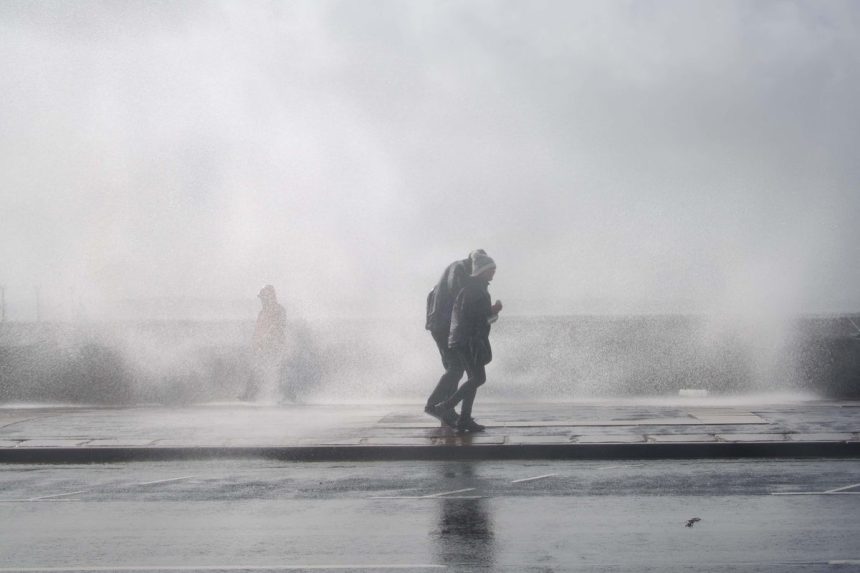Your support helps us to tell the story
From reproductive rights to climate change to Big Tech, The Independent is on the ground when the story is developing. Whether it’s investigating the financials of Elon Musk’s pro-Trump PAC or producing our latest documentary, ‘The A Word’, which shines a light on the American women fighting for reproductive rights, we know how important it is to parse out the facts from the messaging.
At such a critical moment in US history, we need reporters on the ground. Your donation allows us to keep sending journalists to speak to both sides of the story.
The Independent is trusted by Americans across the entire political spectrum. And unlike many other quality news outlets, we choose not to lock Americans out of our reporting and analysis with paywalls. We believe quality journalism should be available to everyone, paid for by those who can afford it.
Your support makes all the difference.
As Storm Eowyn sweeps across the UK, parts of Northern Ireland and Scotland are expected to see gusts of up to 100mph (161km/h), bringing heavy rain and treacherous conditions.
As a red weather warning has been issued by the Met Office – an alert only issued once or twice a year when there is an expected danger to life – authorities are advising those to keep travel to a minimum.
While many may be batting down the hatches and staying in – if you’re venturing out, a weatherproof ensemble is essential.
So, outdoor pursuit experts detail how you can proof your wardrobe against the storm.
Know the basics
Now it may seem obvious which coat to go for when deciding between your mackintosh or wool blazer – but there are some basic tips and tricks to look out for to ensure you’re keeping dry in the downpours.
“Double lining allows an ‘on/off’ and ‘layering up or down’ approach,” says head of womenswear design at FatFace, Jo Collins. “We lose a lot of body heat from our hands and our heads, so coats with warm pocket linings, hoods and drawcords ensure the cold stays out and the warm stays in.
“Opt for borg linings as these are perfect for both warmth and comfort.”
It’s important to make sure your coat is waterproof as opposed to ‘showerproof’ or ‘water-resistant’, as these can only stand light rain.
“Waterproof garments have a waterproof/breathability rating measured in millimetres,” explains director of Ellis Brigham, Mark Brigham.
“The minimum rate to be called waterproof is 10,000, moving up to 20,000 to indicate a greater waterproof capability.
“When you purchase a jacket in waterproof materials, ensure the seams are sealed or it will leak very quickly. Look inside a waterproof jacket for strips of tape covering the seams.”
Joules Highbridge Khaki Green Waterproof Longline Coat with Hood, £199
How to layer without becoming hot and bothered
To avoid getting hot and bothered in several layers, you should begin with a base layer known as a ‘wicking layer’ that keeps the sweat off your skin.
“Then a mid layer which is a fleece or could be low-bulk insulation, and then a breathable shell – the aim here is to wick moisture away from the body,” explains Brigham.
“Start with a breathable merino wool base layer, add an insulating layer for warmth and finish with a waterproof shell,” says icebreaker‘s senior manager, Jelena Fursman.
“This combination ensures breathability and protection and helps to prevent the all-too-familiar stuffy feeling associated with synthetics.”
How to weatherproof your existing wardrobe
If you’re on a time crunch and don’t have time to order a high-spec coat – you can certainly weatherproof your existing wardrobe.
“Grangers is a wash-in repellent that can restore clothing or footwear and give it a waterproof coating,” says Brigham. “You could also use wax on leather footwear.”
“Seam sealers, wax treatments or wash-in waterproof solutions like Nikwax work on existing clothing,” suggests head of design at Sealskinz, Steve Lemmon.
Grangers Wash + Repel 2 in 1 – 300ml, £12, Ellis Brigham
How to store your clothes without getting mildew
To avoid growing mildew on your storm-soaked clothes, “hang wet clothing in a well-ventilated space or use a drying rack,” says fashion expert Karine Laudort.
“For shoes, stuffing them with newspaper or unprinted paper helps absorb moisture and maintain shape.
“Avoid placing items directly on heaters, as excessive heat can damage materials, and consider using a dehumidifier to speed up drying while reducing mould risk.”
When it comes to cleaning your outerwear, washing waterproof garments require different care to ensure they don’t lose their water-resistance.
“You cannot wash your raincoat using your usual washing detergent or fabric softeners as they contain harsh chemicals which will damage the waterproof membrane,” explains professional cleaning expert, Barbara Stern, at Joules.
“Either wash on a cold cycle without any detergent or invest in a special waterproof washing liquid and follow the pack instructions.
“Before putting your coat in the machine you should always ensure the drum and detergent drawer are free of any residue detergent.”






